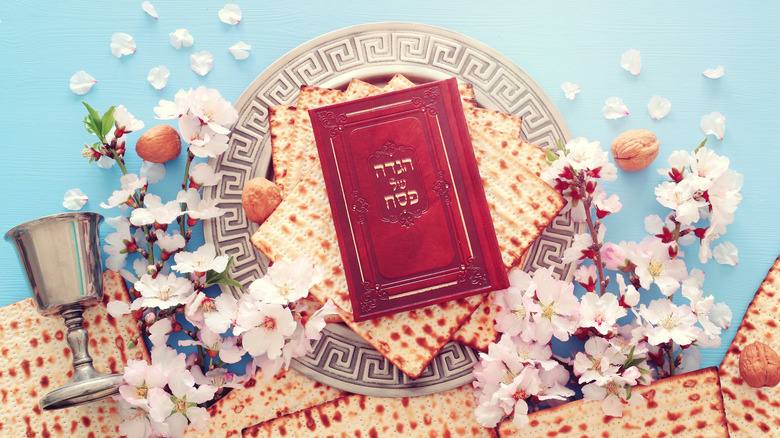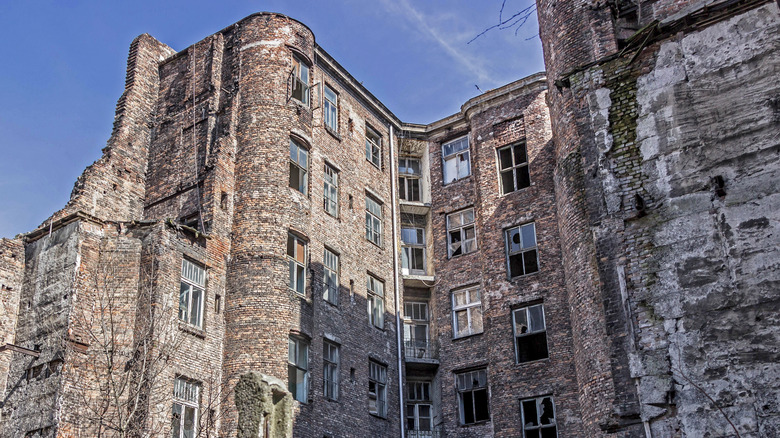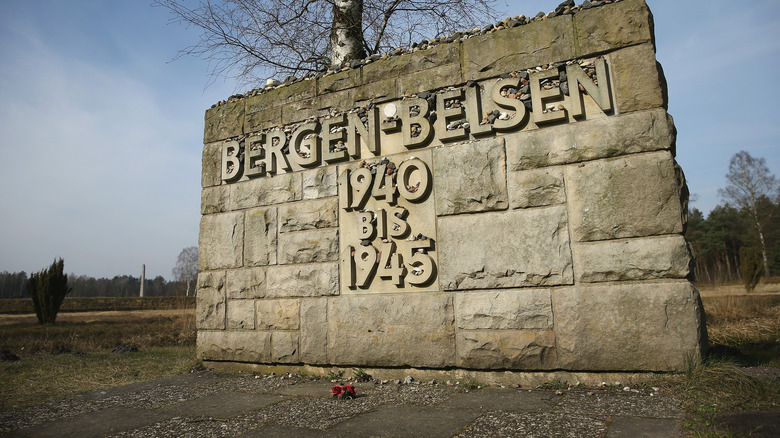What Were Passover Celebrations In Nazi Germany Like?
According to the Almanac, Passover in 2022 is set to be celebrated from April 15 to April 23. For those who are not Jewish or are simply unfamiliar with this holiday, Britannica writes that it commemorates the emancipation of Jews from slavery in Ancient Egypt. Some traditions include enjoying a Seder, a feast that occurs on the first two days of Passover (per KARE). Additionally, Jews abstain from eating chametz, or food items that use leavening agents (such as yeast). Instead of bread, matzah is commonly eaten throughout Passover. Other foods, like certain alcoholic drinks, are also prohibited during Passover.
Celebrating this significant holiday decidedly changed under the Nazis. After Germany invaded Poland in 1939, the Imperial War Museum reports, Jews were almost immediately sent to live in ghettos. The largest was the Warsaw ghetto in Poland. Starting in 1942, the Nazis began to deport Jewish peoples from the Warsaw Ghetto to concentration camps (via History).
On the eve of Passover in April 1943, the Nazis attempted to fully liquidate the Warsaw ghetto, per Smithsonian Magazine. Although the Jews fought back in a month-long insurrection known as the Warsaw Ghetto Uprising, their efforts was squashed. This resulted in the deaths of thousands. Despite the deplorable and inhumane conditions they faced in ghettos and concentration camps, some Jews were still able to celebrate Passover.
Jews were forced to smuggle or improvise for Passover
Aish reports that when Jews were first sent to the Warsaw Ghetto (seen above), they were able to smuggle in foods that were not leavened in order to celebrate Passover. Additionally, bootleg matzah factories were established. In some cases, Jews in hiding also celebrated the holiday. Moment Magazine writes that one set of brothers living in the Krakow Ghetto made matzah while they were holed up in an attic. By using a flame to kosher a metal board, they made a makeshift oven. They then used borscht, a beet-based soup, for wine. As for the Jews in the Warsaw Ghetto, they celebrated their last Passover on April 18, 1943, at the same time that the Nazis were planning to liquidate the last of them.
According to Yad Vashem, many of the Jews in the Warsaw Ghetto had been preparing for the holiday for some time. They were able to get matzah and wine for the Seder. One Holocaust survivor, Roma Frey, explained that her family even acquired candles and a white table cloth for the occasion. They did their best to make their basement feel special, despite knowing that liquidation was imminent.
Others, like 12-year-old Itzchak Milchberg, celebrated in bunkers while the chaos of the Warsaw Ghetto Uprising began. He had never missed a Seder before and took his chance sneaking into his uncle's bunker in the ensuing violence. That night during the Seder, Milchberg's uncle told him, "You may die, but if you die, you'll die as a Jew. If we live, we live as Jews."
Passover celebrations were held in concentration camps
Per The Holocaust Center of Pittsburgh, celebrating Passover in concentration camps was seen as form of resistance against the Nazis. Sometimes, wheat was smuggled into the camps to make matzah in secret (via Moment Magazine). At times, however, they were faced with critical decisions. The United States Holocaust Memorial Museum writes that certain food, such as kosher goods, had been banned long before the Jews were sent to ghettos or concentration camps. Things only got worse when these events occurred and access to any food became dismal. When it came to Passover and refraining from eating chametz, the Jews were posed with a new set of problems.
For one, they often did not have anything to make matzah with. They then had to make a choice: eat chametz on Passover or be faced with illness or possible death by starvation. During Passover in 1944 at the Bergen Belsen concentration camp, Rabbis Aaron Davids and Abraham Levisson told their followers it was permissible for them to eat bread for the Seder. This was a life-or-death situation and they only had access to leavened products.
They then proceeded to write and recite a special prayer before eating the chametz as a form of forgiveness. (The prayer is posted on the website of the United States Holocaust Memorial Museum.) Tragically, it's believed that both Rabbis Levisson and Davids died of exhaustion and starvation shortly before the camp was liberated.


